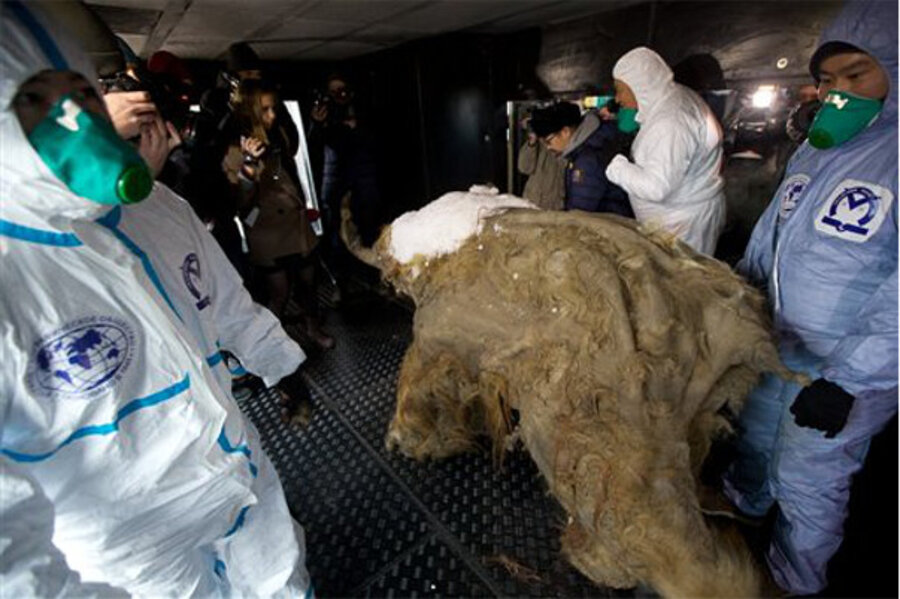Baby mammoth carcass wows crowds in Moscow
Loading...
| MOSCOW
Nearly 40,000 years old and in surprisingly good shape, the carcass of a woolly mammoth has gone on display in Moscow.
The scientists who found the teenage mammoth in 2010 in Russia's far north region of Yakutia have named it Yuka. The carcass had gone on display in Japan and Taiwan before it was exhibited in Moscow Tuesday.
Albert Protopopov, a researcher from Yakutia, said Yuka's carcass bore traces indicating that humans hunted for mammoths during the Ice Age. The young mammoth, aged between six and nine years old when it died, also had injuries left by an encounter with a predator, he said.
Protopopov told The Associated Press that Yuka is an estimated 38,000 years old, while other researchers have put its age at about 39,000.
Yuka was pulled out of permafrost in a spectacular condition, its soft tissues and reddish fur well preserved. Even most of its brain is intact, offering scientists a rare opportunity to study it.
Up to 4 meters (13 feet) in height and 10 tons in weight, mammoths once ranged from Russia and northern China to Europe and most of North America before they were driven to extinction by humans and a changing climate.
Woolly mammoths are thought to have died out around 10,000 years ago, although scientists think small groups of them lived longer in Alaska and on islands off Siberia.
Researchers have deciphered much of the woolly mammoth's genetic code from their hair, and some believe it would be possible to clone them, if living cells are found.
Protopopov, though, was skeptical about that. "It is not possible to find living cells as they don't survive after tens of thousands years," he said.







